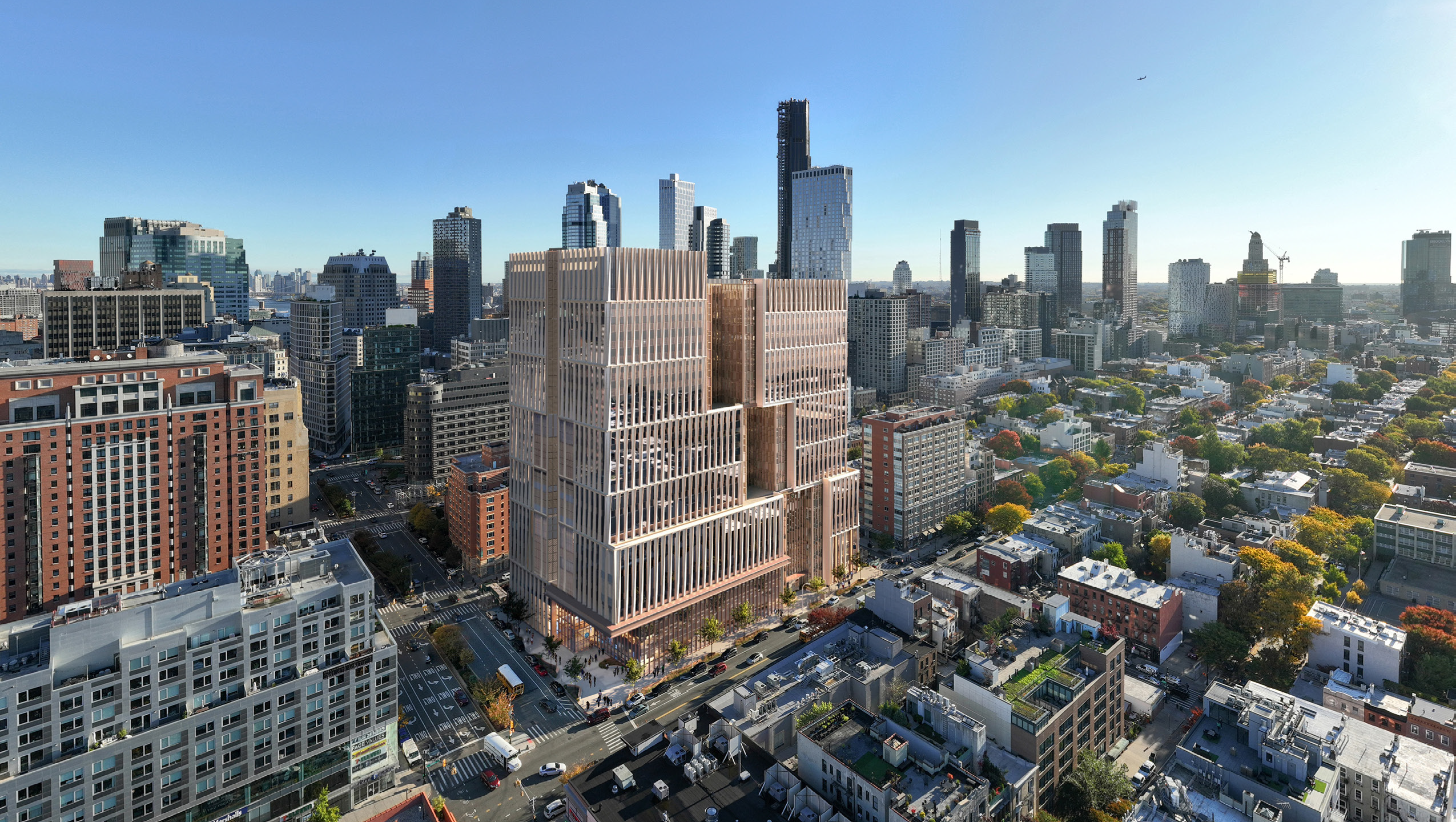New York City’s Design-Build Delivery Journey

By Beverly Prior
While this article is focused on New York City’s jails story, it is shared in the context of the journey that every owner must engage in as they plan and implement an alternative delivery project. Delivering any project requires an interplay between the owner’s needs and goals and willing participants in the market such that builders and designers assess that they can successfully deliver the project’s scope and quality within schedule and on budget…while managing risks. It’s a two-way street in which owners and proposers assess each other as potential partners. In the case of design-build, the benefits are realized when risks are managed by the party most able to manage them and when each party’s goals and concerns are respected and addressed.
New York’s bold commitment to justice reform
In 2018, New York City elected officials committed to the moral and ethical need to close Rikers. Thus began the process of developing a plan and implementing this century’s most ambitious justice reform program: the Borough-Based Jails Program (BBJ), intended to replace Rikers jails with 4 borough-based facilities – one each in the Bronx, Queens, Manhattan, and Brooklyn. These new facilities would be more accessible to families and service providers, more humane for those in custody and those working in the facilities, and more operationally functional.
NYC’s bold commitment to alternative delivery
While the Department of Design and Construction (DDC) long had sought a better project delivery approach than traditional Design-Bid-Build, enabling legislation from the State of New York was needed for the City to implement it. New Yorkers make no small plans: concurrent with NYC’s commitment to the multi-billion BBJ program, New York State provided its first enabling legislation! The State’s enabling legislation included a 2-step process: a qualifications-based shortlisting and then a proposal with a price-based factor.
So now what?
The City had not used Design-Build before and therefore the structure to support Design Build – the designers and builders and approval agencies had not done City Design-Build projects before. The enabling legislation requirements had to be met, the project budgets were greater than $1 billion, and the jails concept would be a new model for the Department of Correction. Following are the steps NYC took to address these significant challenges:
- Building the team to support success. The City immersed its staff in Design Build Institute of America (DBIA) training for Design-Build best practices, engaging oversights and agencies having jurisdiction, and designing new pathways for approvals. The City sought external partners with expertise in design-build projects, including a DBIA advisor, a Program Manager, and a legal consultant, to offer guidance and to support implementation. The City also strategically hired new staff with experience in design-build for other public agencies and institutions to grow the design-build culture change from within.
- Market research to identify and address industry concerns/risks. Through a Request for Information process, the City met with builders and designers to identify their concerns and possible ways to address those concerns, as follows:
- Concern: The City’s first ever use of design-build delivery is for a very high profile, very large and complex program, and might be overly ambitious.
- Response: To prove out its commitment to and ability to implement design-build projects, the City used DBIA best practices in procurement and contracting, held design-build forums, and began the program with five early works design-build projects ranging from $40-150 million. These projects were contracted under a best value lump sum process that was successful at that range of construction values.
- Concern: A limited number of builders have the financial capability, risk tolerance, and bonding and insurance capabilities to take on mega projects, and a lump sum contracting approach through a 9-month in-market proposal period is too short and, therefore, too risky to proposers.
- Response: the City pivoted to a two-phase Guaranteed Maximum Price (GMP) approach for the jail facilities with an initial target price that would be confirmed during the Phase 1 design and site validation process before committing to a final price for the Phase 2 design completion and construction. Under the GMP approach, the City has achieved a competitive procurements on 3 of the jails and is in process on the 4th. Given the large lift expected of proposers for the jail facilities, the City offered substantive stipends for the non-selected proposers but also established a program in which all proposers could apply for a mid-proposal partial stipend to cover costs during the proposal period.
- Concern: Defining the new jail’s scope of work for a product that the City had not implemented before felt risky.
- Response: While proposers did not want formal bridging documents, they said conceptual documents would help provide clarity of the City’s scope and intent. In response, the City developed and provided as a reference “indicative documents” for each site.
- Concern: Managing decisions, change requests, and commitment to the original scope of work by the Sponsor Agencies would be important but not something the Design-Builder could control.
- Response: The City’s program leadership owned and managed that risk, establishing a structure for addressing Sponsor Agencies’ requests including prioritizing and balancing added scope with offsetting deductions.
- Navigating the unanticipated. Faced with unanticipated challenges over the last 5 years, the City has shown a remarkable commitment to pivoting as needed to forge a path forward:
- The post-COVID 19 fallout of labor shortages and unprecedented price escalation were compounded by geopolitical factors such as the Russian invasion of Ukraine causing uncertainty with energy prices. To address these challenges, the City amended the Request for Proposals to remove price and schedule caps. With those caps removed, as a counterbalance, the City increased the weighting on price from 10% to 20%.
- The George Floyd incident fallout led to a mounting anti-jail sentiment including AIA New York issuing a white paper stating that architects should not design jails. That led to companies making decision not to pursue this work, further narrowing the number of design-builders that were willing to propose on the BBJ projects.
- To address new jail population projections (post-COVID), the mayor directed an increase in beds at each of the facilities leading to scope and design changes for proposers to address during the limited negotiation or in-market proposal periods. These changes increased the proposal period durations on two of the facilities, so the City offered an increased stipend for the non-selected teams.
Making alternative delivery successful. New York City continues to fulfill on its commitment to the Borough Based Jails Program, to Design-Build contracting, and to pivoting when necessary to face challenges. The key factors making this possible are as follows:
- A committed leadership team. The ability to stay the course and pivot when needed has enabled by highly engaged senior leaders. DDC’s Commissioner Tom Foley, Deputy Commissioner Eduardo del Valle, , legal, finance, procurement, program, and project teams along with sponsor agencies (Department of Corrections, Correctional Health Services and Mayor’s Office of Criminal Justice) have rowed together to make this program happen. And, yes, it takes a village: The City’s success has been enabled by the engagement of all stakeholders including industry partners, elected officials, justice advocates and the community.
- Commitment to change. Culture change does not happen overnight. It is a matter of dogged commitment to repeating a cycle of education, taking action, and making improvements from lessons learned in a repeated cycle. One can’t be afraid to jump in – learning through doing is the best learning. Reflecting and making improvements from that experience is essential. With education and chutzpah, New York City jumped in with 5 early works design-build projects and are bringing lessons learned to the new Facility projects. Repeat, repeat, repeat!
- It’s a program. While procured as 5 separate early works projects and 4 separate new facility projects with multiple design builders, the Borough Based Jails projects are within an overall program which will ultimately have one operator: the Department of Correction. New York City is committed to equity, and wherever possible, each facility will meet consistent standards. Any action on one facility impacts the others, and lessons learned and scope refinements in the first facility feed into criteria for the second, third, and fourth facilities.
The good news is that New York City is set up for success: one project, the $2.958 billion Brooklyn Facility is under contract with Tutor Perini/HOK, two projects – the Bronx and Queens Facilities – will be under contract in August, and the fourth, Manhattan Facility, is in procurement. While all are well underway, the four facilities have yet to start construction. The groundwork is laid and soon the first and then all four of the jails will be under construction. Getting to this point has been a leadership opportunity and a learning experience for all involved, and the accomplishments to date portend well for the future of design-build delivery in New York City public projects.
Beverly Prior, FAIA, has been the AECOM-Hill Joint Venture’s program manager for New York City’s Borough Based Jails Program since 2019.
Editor’s Note: This article originally appeared in the July/August 2024 issue of Correctional News.





